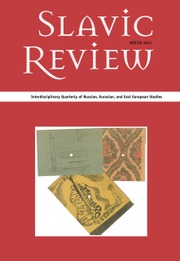The Cambridge Handbook of Role and Reference Grammar
Role and Reference Grammar (RRG) is a theory of language in which linguistic structures are accounted for in terms of the interplay of discourse, semantics and syntax. With contributions from a team of leading scholars, this Handbook provides a field-defining overview of RRG. Assuming no prior knowledge, it introduces the framework step-by-step, and includes a pedagogical guide for instructors. It features in-depth discussions of syntax, morphology, and lexical semantics, including treatments of lexical and grammatical categories, the syntax of simple clauses and complex sentences, and how the linking of syntax with semantics and discourse works in each of these domains. It illustrates RRG's contribution to the study of language acquisition, language change and processing, computational linguistics, and neurolinguistics, and also contains five grammatical sketches which show how RRG analyses work in practice. Comprehensive yet accessible, it is essential reading for anyone who is interested in how grammar interfaces with meaning.
- Introduces the Role and Reference Grammar framework step-by-step, and includes a pedagogical guide for instructors
- Provides in-depth specialist discussions of the linking of syntax and morphology with semantics and discourse
- Illustrates the framework with examples from a wide range of both major and underrepresented languages
Product details
June 2023Adobe eBook Reader
9781009353557
0 pages
This ISBN is for an eBook version which is distributed on our behalf by a third party.
Table of Contents
- List of figures
- List of tables
- List of contributors
- Pedagogical guide Robert D. Van Valin, Jr.
- Introduction Delia Bentley
- Part I. Overview:
- 1. Principles of role and reference grammar Robert D. Van Valin Jr.
- Part II. Topics in RRG: Simple sentences
- 2. Lexical and grammatical categories in RRG John M. Peterson
- 3. A conceptually-oriented approach to semantic composition in RRG Ricardo Mairal-Usón and Pamela Faber
- 4. Semantic macroroles Rolf Kailuweit
- 5. Grammatical relations Randy J. LaPolla
- 6. Argument structure alternations James K. Watters
- 7. Case assignment Wataru Nakamura
- 8. Morphology in RRG: the layered structure of the word, inflection and derivation Francisco J. Cortés-Rodríguez
- 9. Adverbs, mimetics and ideophones Kiyoko Toratani
- 10. Adposition assignment and adpositional phrase types in RRG Sergio Ibáñez Cerda
- 11. The RRG approach to information structure Delia Bentley
- 12. Information structure and argument linking Anja Latrouite and Robert D. Valin, Jr.
- Part III. Topics in RRG: Complex sentences
- 13. The structure and semantics of complex sentences Toshio Ohori
- 14. Linking syntax and semantics in adverbial (adjoined) clauses Lilián Guerrero
- 15. Cleft sentences and relative clauses Luis Paris
- 16. Extraction restrictions in complex sentences Mitsuaki Shimojo
- Part IV. Applications of RRG:
- 17. Role and reference grammar and diachronic syntax Ranko Matasović
- 18. Functional acquisition processes in child language: links to role and reference grammar Richard M. Weist
- 19. Grammatical aspects of language processing in the brain: a role and reference grammar perspective Robert D. Van Valin, Jr.
- 20. Formalization of RRG syntax Laura Kallmeyer and Rainer Osswald
- 21. Computational implementation and applications of role and reference grammar Brian Nolan
- Part V. Grammatical sketches:
- 22. A grammatical sketch of Cheyenne (Plains Algonquian, USA) Avelino Corral Esteban
- 23. A grammatical sketch of Yimas (Lower Sepik, Papua New Guinea) Willian A. Foley
- 24. A grammatical sketch of Avatime (Kwa, Niger-Congo, Ghana) Saskia van Putten and Rebecca Defina
- 25. A grammatical sketch of Amele (Papuan, Papua New Guinea) John R. Roberts
- 26. Case and voice in Amis (Austronesian, Taiwan) Joy J. Wu
- Index.




